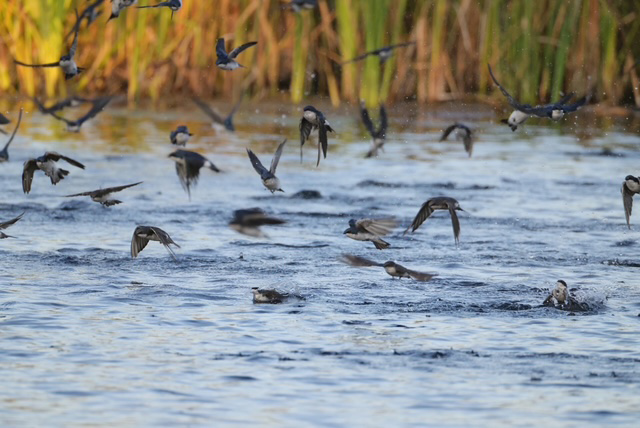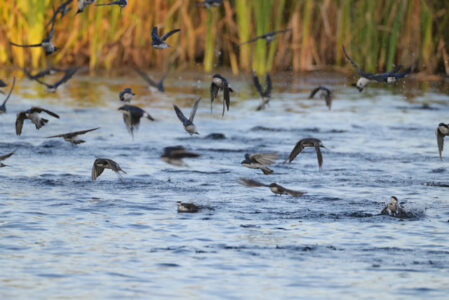Fall bird migration is now at its peak in PA

PHOTO PROVIDED Birds take off and fly from a waterway in this photo by Ritch Heintzelman.
For a little adventure tonight, consider walking outside, greeting the recent full moon (howl for a bit?), and then looking up to wonder what birds might be flying overhead as fall migration — and monarch butterfly migration also — continues in earnest.
Bird migration is yet another miraculous aspect of nature. Hundreds of thousands of birds are on the wing right now migrating each night. The BirdCast website estimated that on the night of September 20, 218 million birds were migrating across the country. For September 16 in Lycoming County, BirdCast counted 711,100 birds flying over the area.
That’s considered a high number by BirdCast, which is an understatement.
Many species fly about 24 miles per hour while some species can fly faster. The common altitude of these flights is 1,800 feet, or about one quarter of a mile. Some species regularly fly 5,000 feet high or almost a mile. The highest flyer in the world is the Rüppell’s vulture which has been clocked flying five miles high.
Some birds might rack up 10,000 miles of flying per year as they migrate.
Most migrating birds pass through our locale from early September through the month of October. The greatest numbers in flight occur three to four hours after sunset.
Some birds migrate solo, but some gather together to migrate. Shown with this article is a photo of tree swallows gathering and then feeding o bugs to stoke their journey south to the Gulf Coast and the Carolinas.
For decades scientists have documented huge declines in songbird numbers. A very dangerous time for songbirds is during migration with window strikes killing an estimated one billion birds annually in the United States. A storm can force migrating birds down from the skies into areas with windows.
Birds become confused, thus leading to great numbers of window strike deaths. A decade ago, we were advised to tie CDs on pieces of string and hang them in front of our windows to deter birds from crashing into windows. Research has proven that method is ineffective, but much new research has yielded information about more effective interventions.
Lots of information is available online.
A second cause of migration difficulties is light coming from houses or larger buildings. Lights distract and confuse birds which often use the moon or stars as navigational tools. To help the birds out, turn all your house lights off at night, especially during migration. A national effort underway with this goal is called Lights Out.
This effort seeks to convince operators of large buildings, skyscrapers and even cities to turn out their lights during peak migration periods. This effort, which has been in effect for several years, has significantly contributed to fewer confused birds and fewer window strikes. Contrary to what we might think, the most window strikes occur in low level buildings (including family homes) — not skyscrapers.
Of course, migrating birds also need food and water sources when they stop to rest. What might you be willing to do to help decrease risks for migrating birds? Thanks for your efforts.

